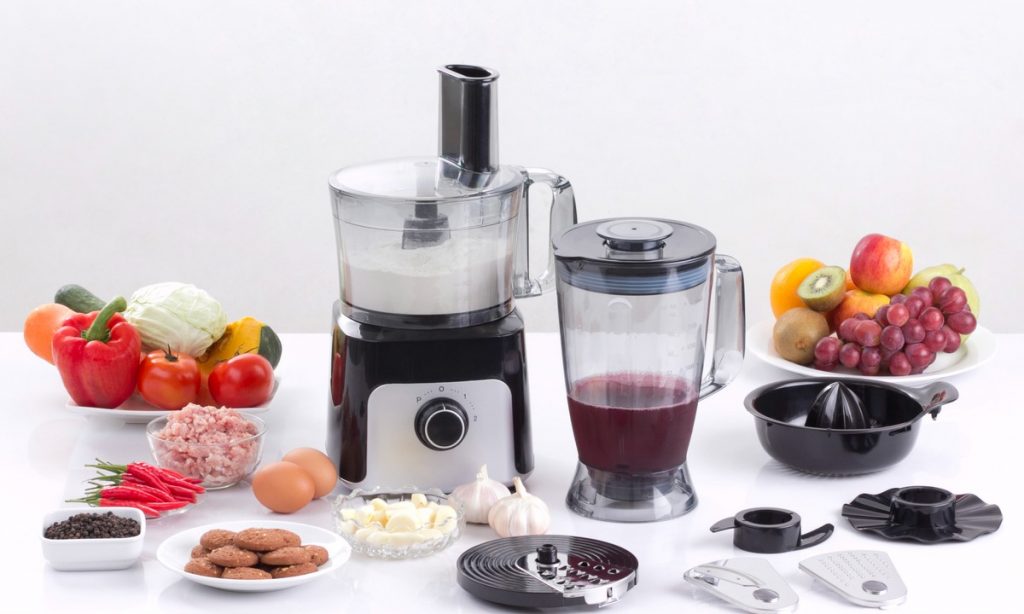Food Processor vs Blender: Which Is More Useful in The Kitchen?

When it comes to your kitchen, there’s nothing more overwhelming than trying to decide what appliance to buy. There are so many brands, models, and sizes to choose from it can be intimidating. Specifically, you may be wondering which is more useful in your kitchen: a food processor or a blender? In this post, we’ll compare and contrast the two popular kitchen appliances and help you decide which one is best for your needs.
We’ll look at the pros and cons of food processors and blenders so you can make an informed decision that will support you in all your culinary endeavors. We’ll also provide a few tips on how to care for and maintain your chosen kitchen appliance.
Blenders
Definition of a Blender
A blender is an electrical kitchen device that blends ingredients into liquids or pastes. It is typically composed of a jar or container, lid, and blades powered by an electric motor. Essential features of a blender include the ability to chop, grind, and blend different types of ingredients at different speeds. Differences between blenders and food processors include size, as blenders tend to be much smaller than their counterparts, and processing capability. Blenders are used to puree things, and food processors can do more complex tasks, such as kneading dough or processing nuts into butter.
Benefits of a Blender
The most obvious benefit of using a blender is its ability to quickly make smoothies, juices, and other liquids from various fruits and vegetables. It is used to make sauces such as pesto or hummus easily. It also offers some versatility in preparing certain foods, such as pureed soups or mashed potatoes that would otherwise be difficult to achieve with a food processor alone.
Food Processors
Definition of a Food Processor
A food processor is an electrical appliance used to facilitate the preparation of food. It is typically composed of a work bowl, lid, and multiple blades or discs, which can be changed depending on the desired outcome. Essential features of a food processor include the ability to chop, grind, mix, and puree ingredients. The size, number of blades, and consistency of processed food differ between a food processor and a blender. A food processor typically makes thicker and chunky dishes, while a blender results in smoother mixtures.
Benefits of a Food Processor
Using a food processor can dramatically speed up the preparation time for meals. This is because it allows for faster cutting, slicing, grinding, and pureeing than can be done with manual labor. It provides a lot of versatility for recipes, as it can accommodate various ingredients while producing different results depending on the blade used. Food processors are generally more durable than blenders, making them a great long-term investment for any kitchen.
Advantages and Disadvantages of Both Appliances
A blender is relatively inexpensive compared to a food processor, and its small size makes it easier to store in the kitchen. It has the added advantage of being able to make smooth drinks and sauces with ease. One disadvantage is that it cannot handle tasks such as kneading dough or slicing vegetables quickly as a food processor can.
There are several advantages associated with using a food processor, which make it an attractive option for any kitchen enthusiast. Firstly, they have more power than blenders, so they can quickly process tougher foods such as nuts into butter in no time at all. Secondly, they are generally more durable due to their larger size, making them less likely to break down over time with proper maintenance and care. Its versatility makes it incredibly useful for performing multiple tasks, such as shredding cheese or making sauces.
Food processors are usually more expensive than blenders due to their larger size and increased power capabilities. They also require more maintenance due to their larger number of components.
How To Choose the Right Appliance for Your Kitchen
When deciding which appliance best suits your kitchen needs, there are three main factors you should consider. These include your budget, your needs, and your counter space availability. Determine how much you are willing to spend on an appliance, then think about what types of foods you plan on preparing. Assess how much space you have available in your kitchen for storage purposes before deciding which appliance you want to purchase.
Food processors are great for their versatility and strength, allowing you to complete complex tasks like kneading dough or grinding nuts. Blenders are smaller and great for making smooth drinks or sauces. Both appliances have advantages and disadvantages, so it is important to consider your specific needs when making a purchase.
Conclusion
Buying a kitchen appliance isn’t just a purchase, it is an investment, and we hope this article will help you make the right one for you. No matter which appliance you decide to invest in, it is important to store and maintain it correctly to keep it in good working order for years to come. With the right amount of care, you can make sure that your chosen kitchen appliance not only meets your needs but is also a reliable source of mealtime magic for years to come.